Cumberland Plateau, Tennessee
CRC Stewardship Ridge, a Tennessee Stewardship Forest, near Spring City
Forest owners and stewards: Chris and Christina Anderson
In 2006 it was certified as a Forest Stewardship, and in 2012 as a Family Forest Tree Farm. In 2016, it was recognized as Tennessee's Tree Farm of the Year.
The property is next to Stinging Fork State Park. The Cumberland Trail (under construction) will pass along another boundary. Elevation overall is about 1,200 feet, but with a lot of rugged variation.
Canopy cover where plantings occurred are mostly deciduous, with some old hemlock groves in the deepest ravine.
First sprouts!
Photographs and narrative report by Connie Barlow, who visited Chris Anderson onsite 12 November 2017.
"Florida Torreya to Cumberland Plateau"
• Video 24b - 23 minutes (Seedlings #18 - #34)
• DETAILED REPORT BY THE ANDERSONS OF TORREYA SEED PLANTING AND THE CONTEXT OF OTHER TREES PLANTED ONSITE: PDF, February 2018.
Free-planting seeds directly into forested landscapes is best in years when we have plenty of seeds to spare, as in the autumn of 2015 when the Anderson family became a Torreya planter. Planting at depth or under rocks are techniques for minimizing rodent predation. Flagging the planting sites is a helpful, though more expensive, way to ensure that one can keep checking up on the sites. Here, they added a flagging innovation. Whenever an emergent Torreya was seen poking up above the detritus or out from the side of a rock, a second flag was added to mark the seedling.
We began our site visit on the plateau upland. While there are some pine-rcih sections, the canopy is almost entirely deciduous. The inventory of species he has planted include: ADD SPECIES and numbers.
Beginning the 4-wheel drive downhill into the 30 acres of concentrated Torreya plantings, we paused along the edge of the two-track to check out the new seedlings right alongside. Chris had planted some there expressly so that he could easily check up on them whenever he was transiting that part of the property.
When the off-road track ended. We headed down into the ravine on foot.
We stopped only to visit (and photograph) the double-flag sites.
Chris estimated that between 40 and 50 of the planted seeds had emerged as seedlings by this mid-November day. September was when he began spotting them.
If this is deer damage, Chris says that placement of a piece of soap alongside could serve as deterrence. If this is rodent or rabbit damage, what is there to do? A light winter snow may expose seedlings to the greatest browsing threat.
Experience indicates that while rock rocks or deep planting both diminish seed predation prior to germination, more than half of the young seedlings will suffer modest or severe herbivore damage upon emergence above ground. Torreya leaves, upon hardening, have needle-sharp tips — which may deter deer but not fully rodents and rabbits. We need to experiment and learn more.
Chris used large flat rocks (abundant on their land) to protect the seeds planted in the above two spots.
The steepest slopes were far down the ravine. Are they too steep for deer to stop and browse on?
PHOTO ABOVE LEFT: Red paint marks the individual trees protected (and by year).
ABOVE RIGHT: The paint mark is on the opposite side; this is the biggest hemlock tree on the property.
Tennessee is far enough north to keep this Torreya safe from the kinds of pathogens devastating this species in Florida, but far enough south to offer a second growth spurt in August or September.
The apical bud (in the very center) will likely green up in summer and then push a new section of stem up vertically — unless this little tree "decides" that it needs to keep putting effort first into getting its roots deeper and more established.
Above left: Box turtle with Torreya, 16 June 2018
• NOVEMBER 2019: A beautiful, herbivory-free torreya free-planted from seed by Chris Anderson directly into his forested property, east side of Cumberland Plateau, TN.
CHRIS writes:
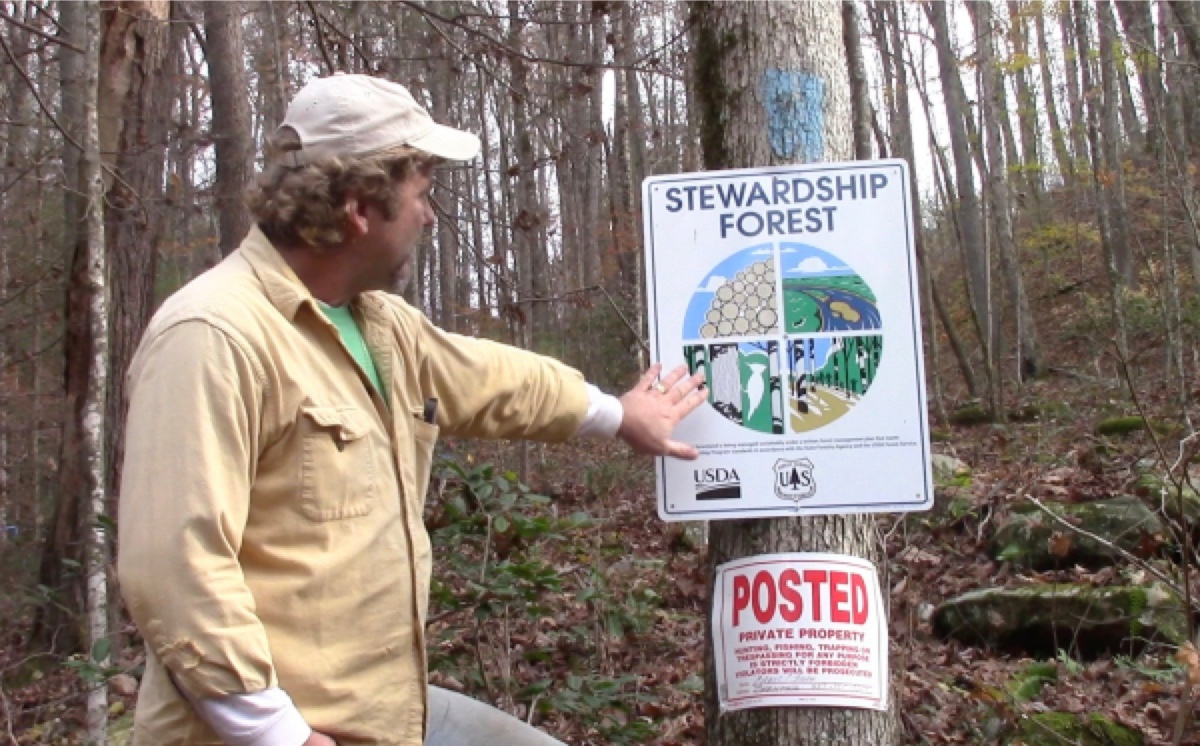
Chris and Christina Anderson are actively reforesting 232 acres on the east side of the Cumberland Plateau. The couple have planted some 50,000 native trees (including American Chestnut) into their stewardship forest: CRC Stewardship Ridge.
eastern-most ridge of the Cumberland Plateau, before continuing
east into the Tennessee River Valley." — Chris Anderson
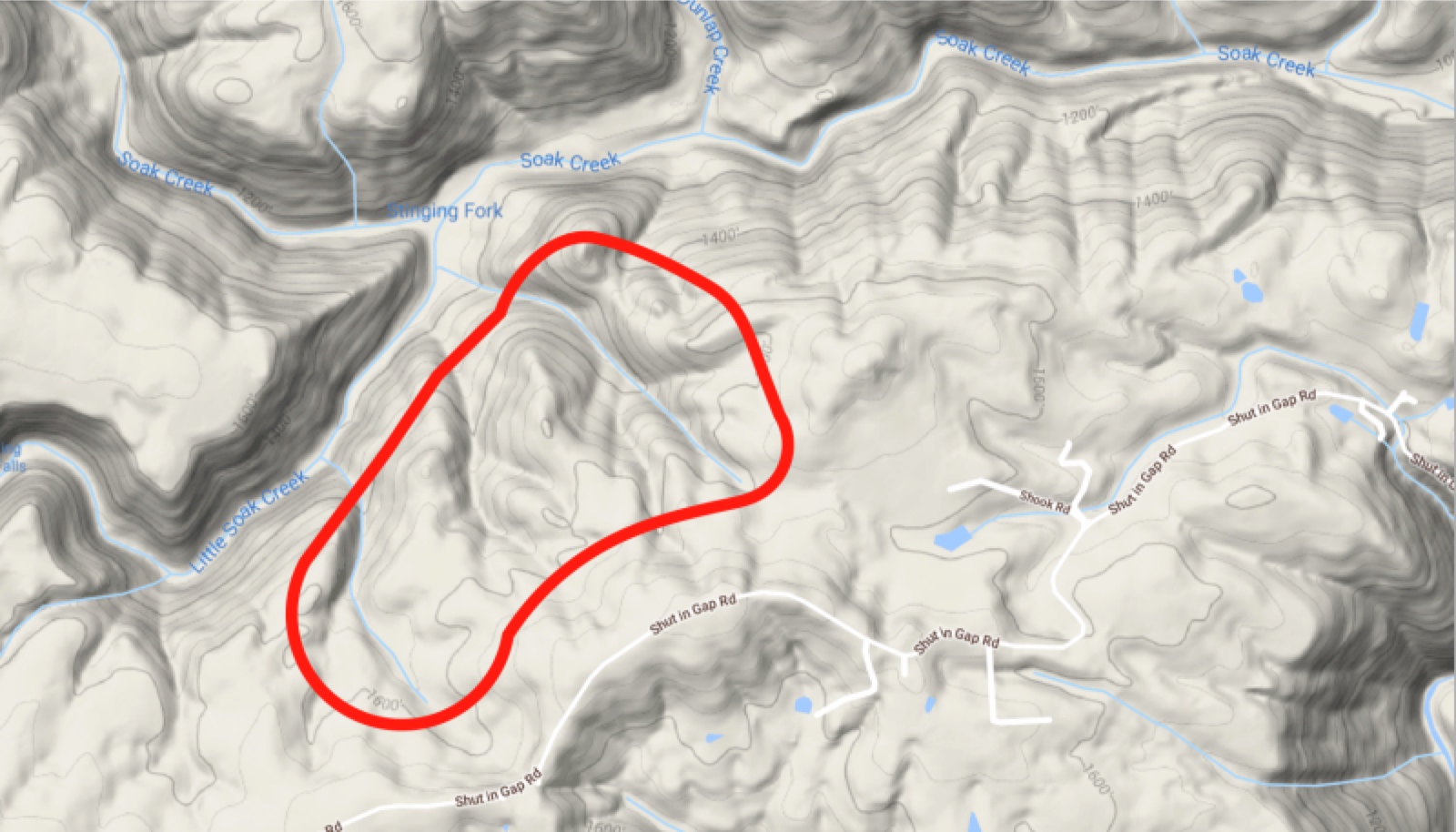
Most seeds were planted within two ravines (visible at the SW and NE edges of the bounded red section shown on this map. Some were also planted along the firebreak jeep trail in the uplands, as these sites can regularly be checked without walking off-trail.
Results posted both as 2-part VIDEO REPORT on youtube and as PHOTO-ESSAY.
____________
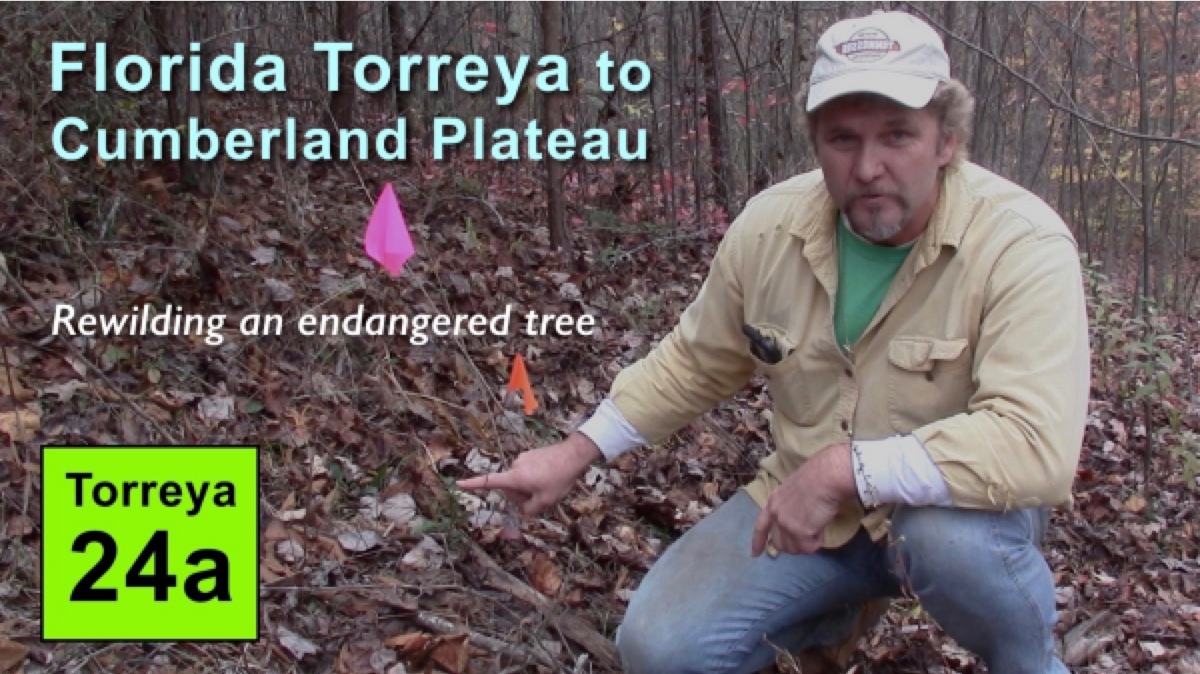
Rewilding an Endangered Tree
• Video 24a - 24 minutes (Seedlings #1 - #17)
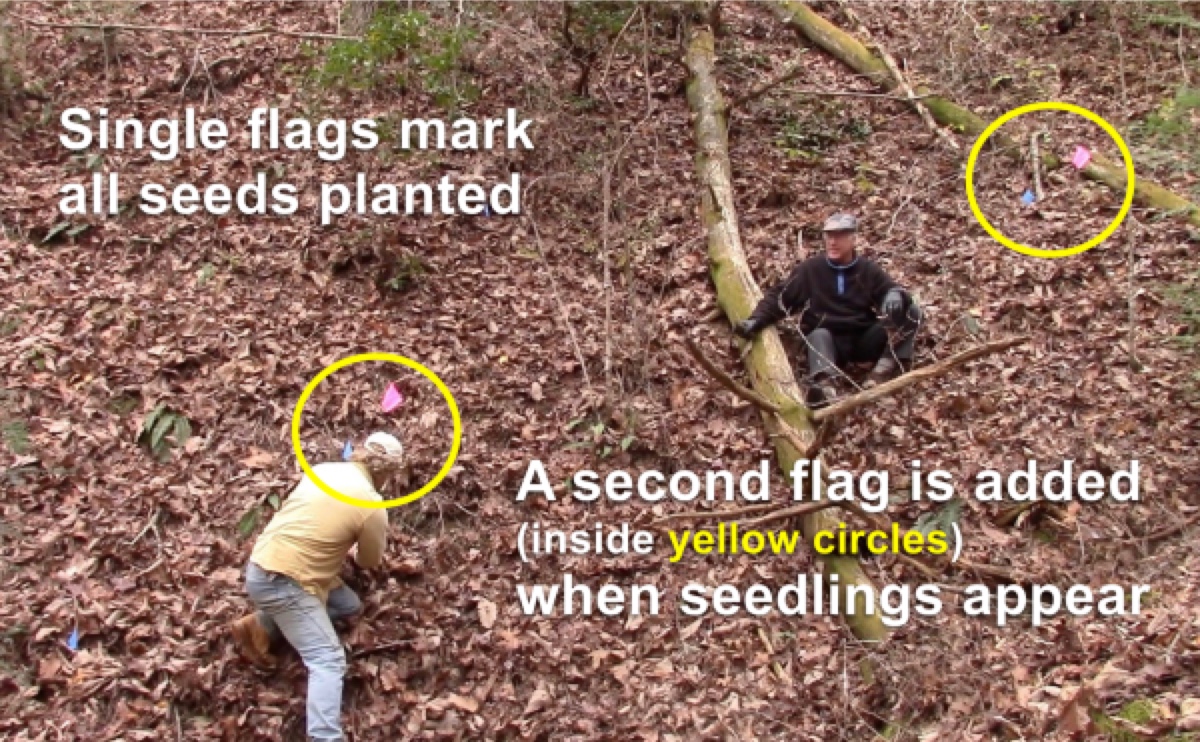
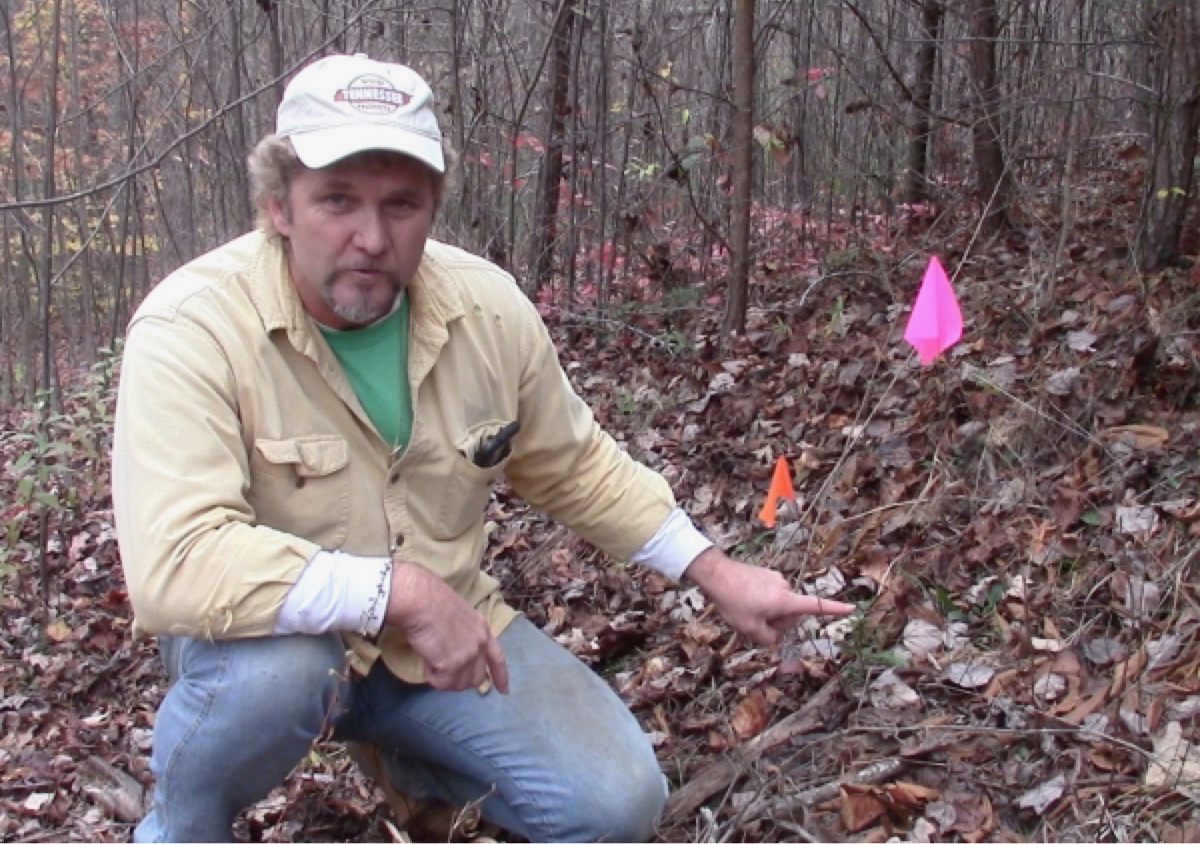
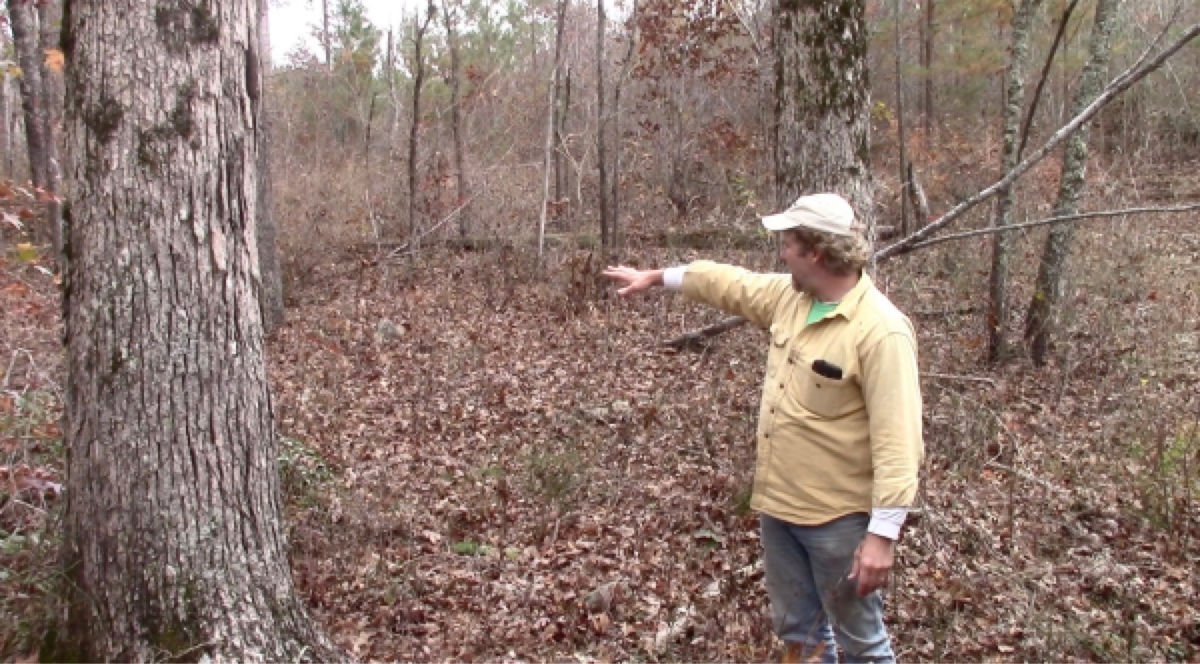
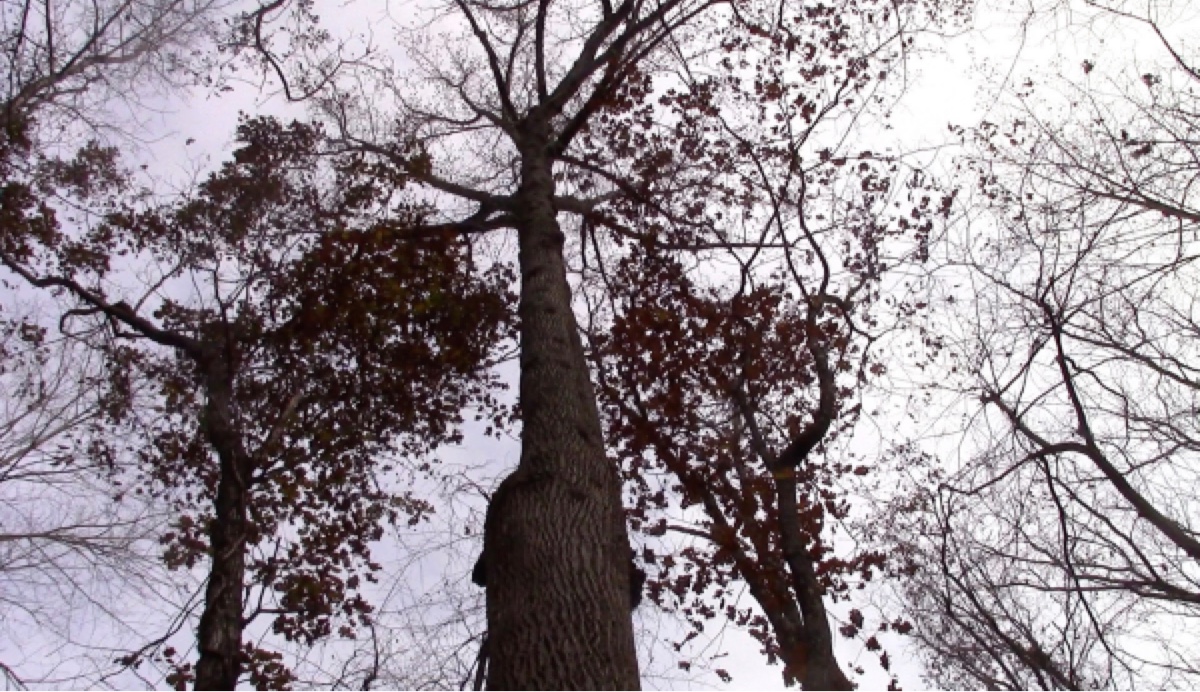
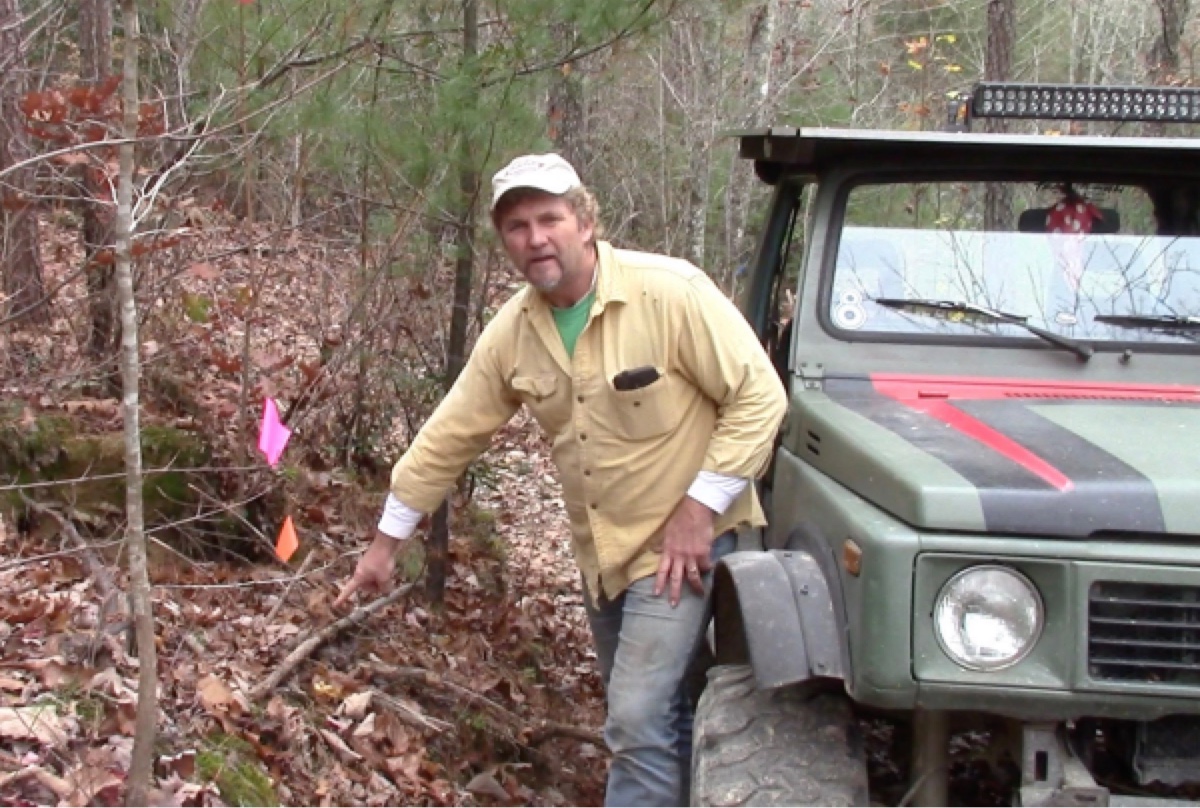
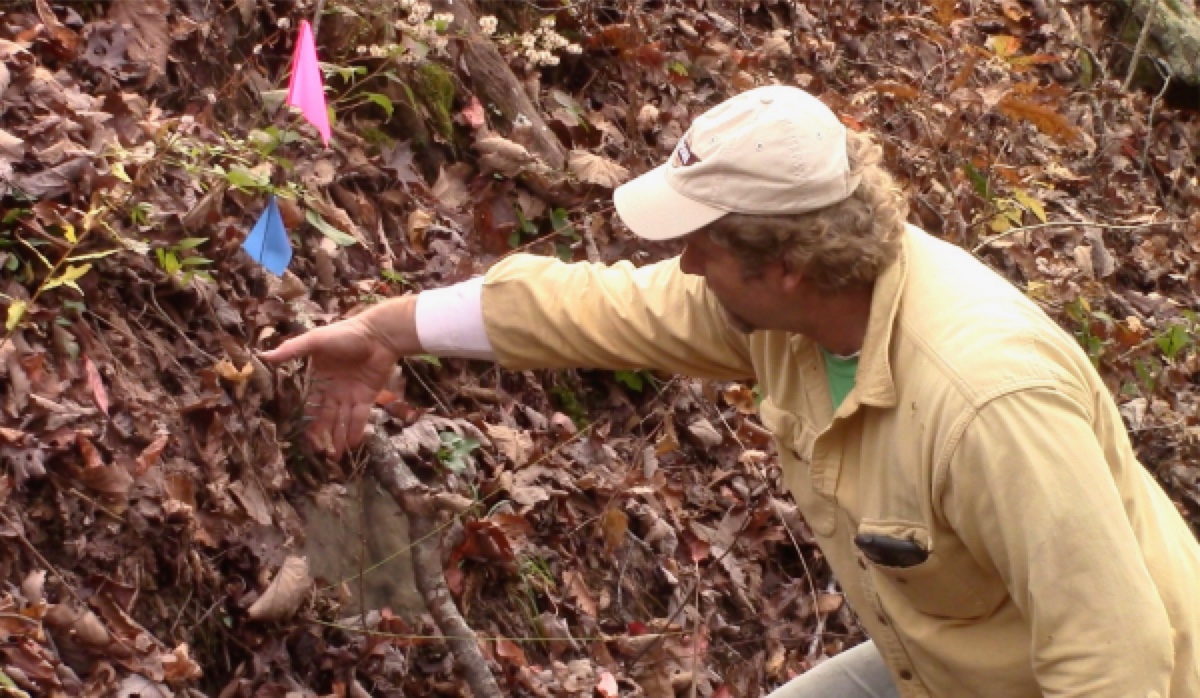
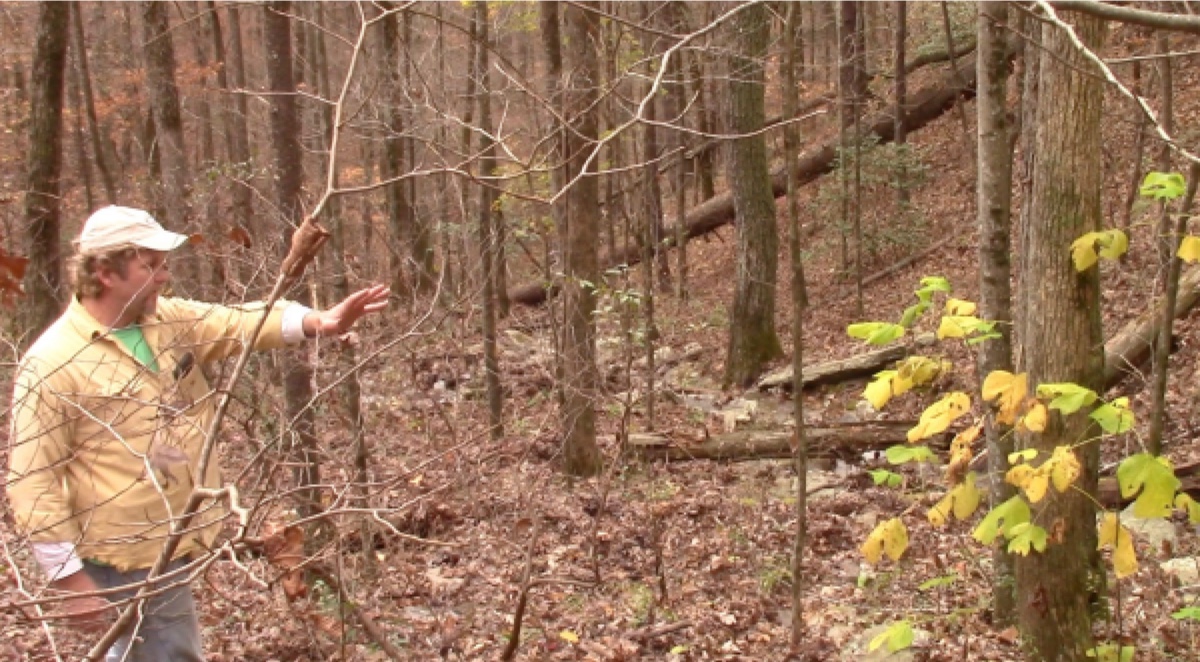
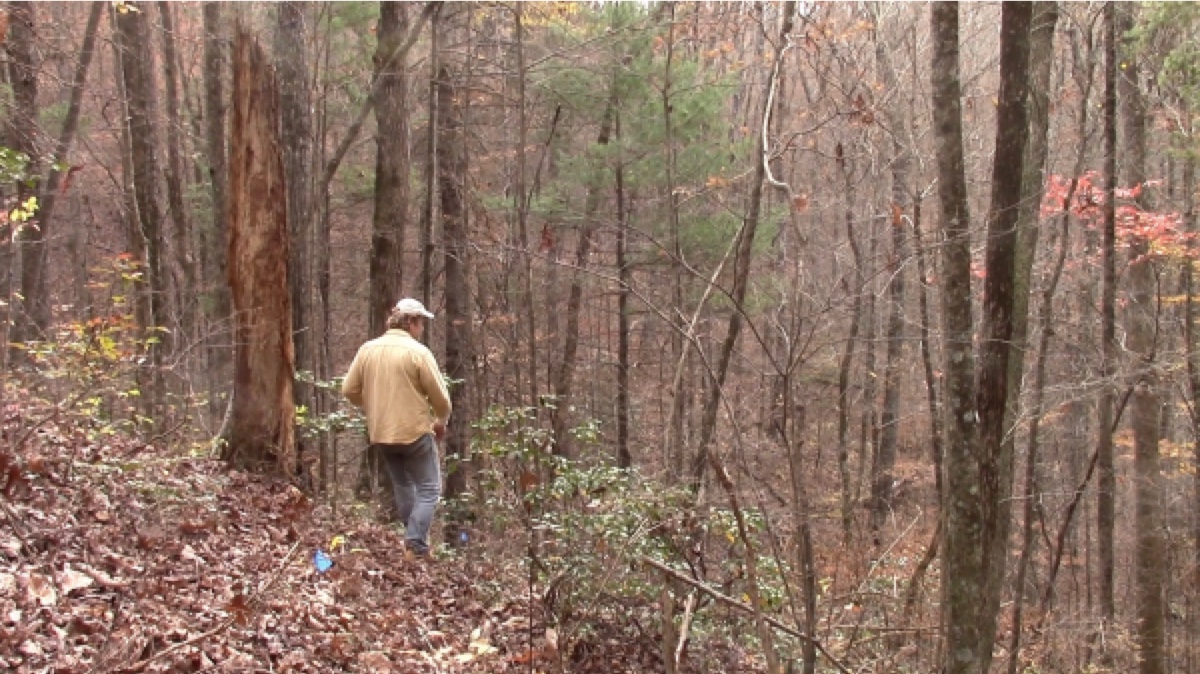
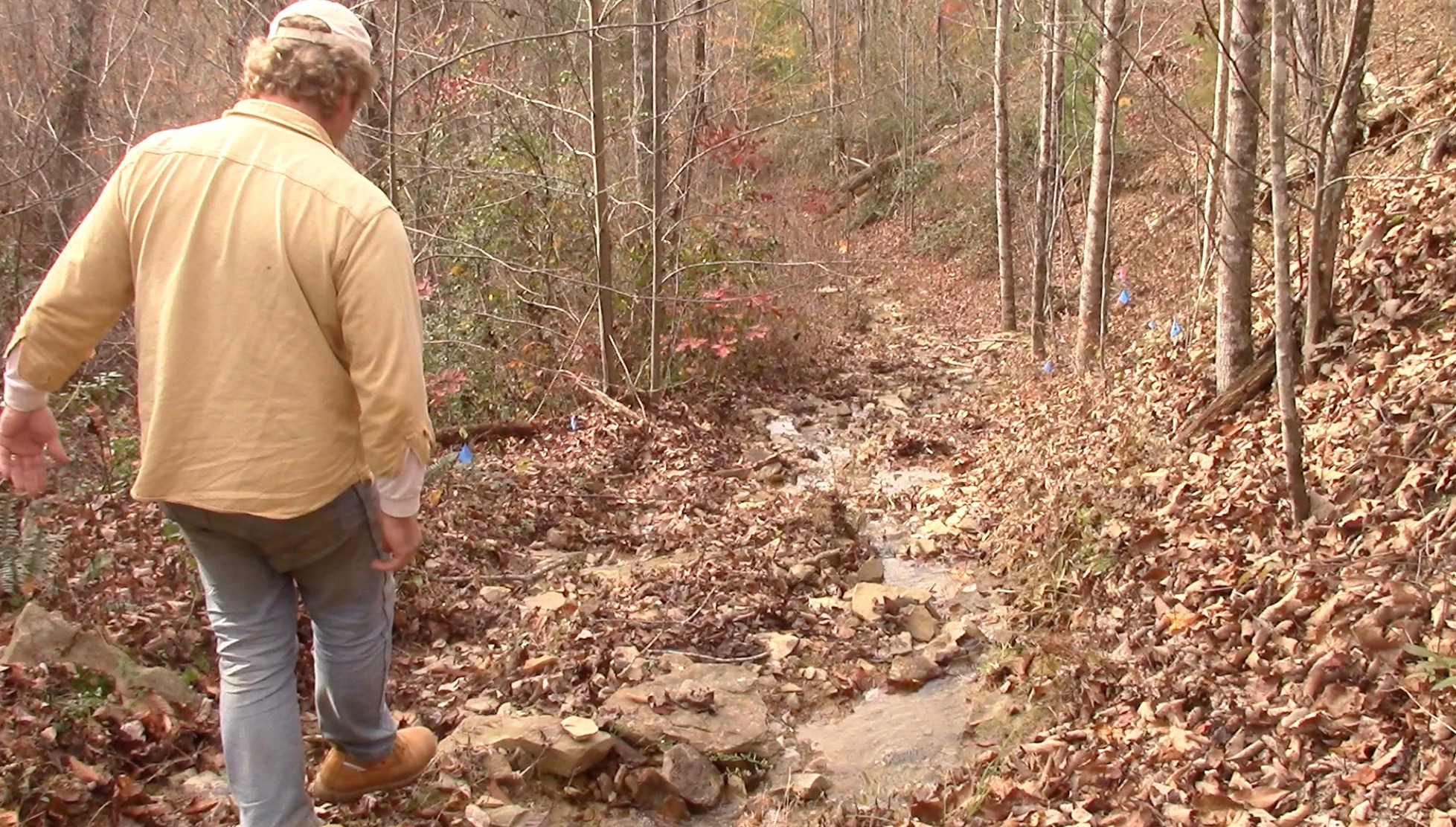
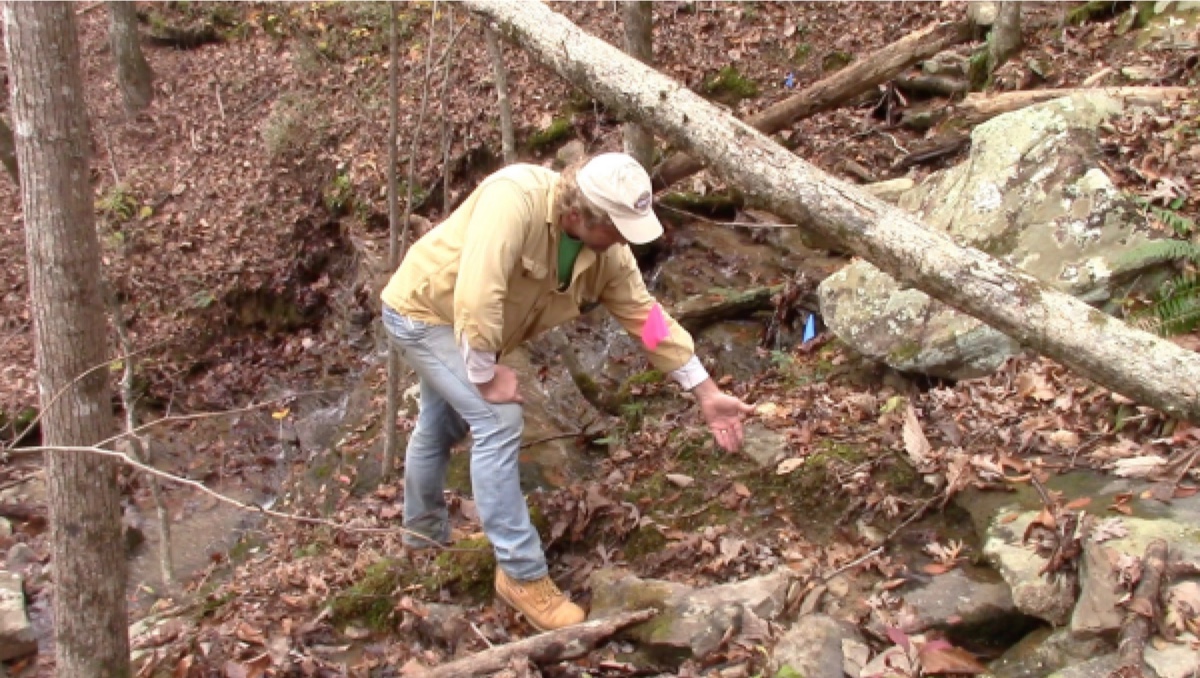
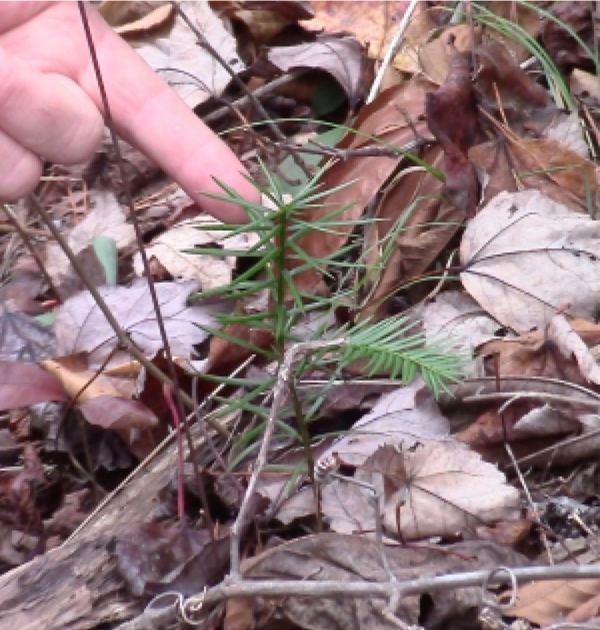
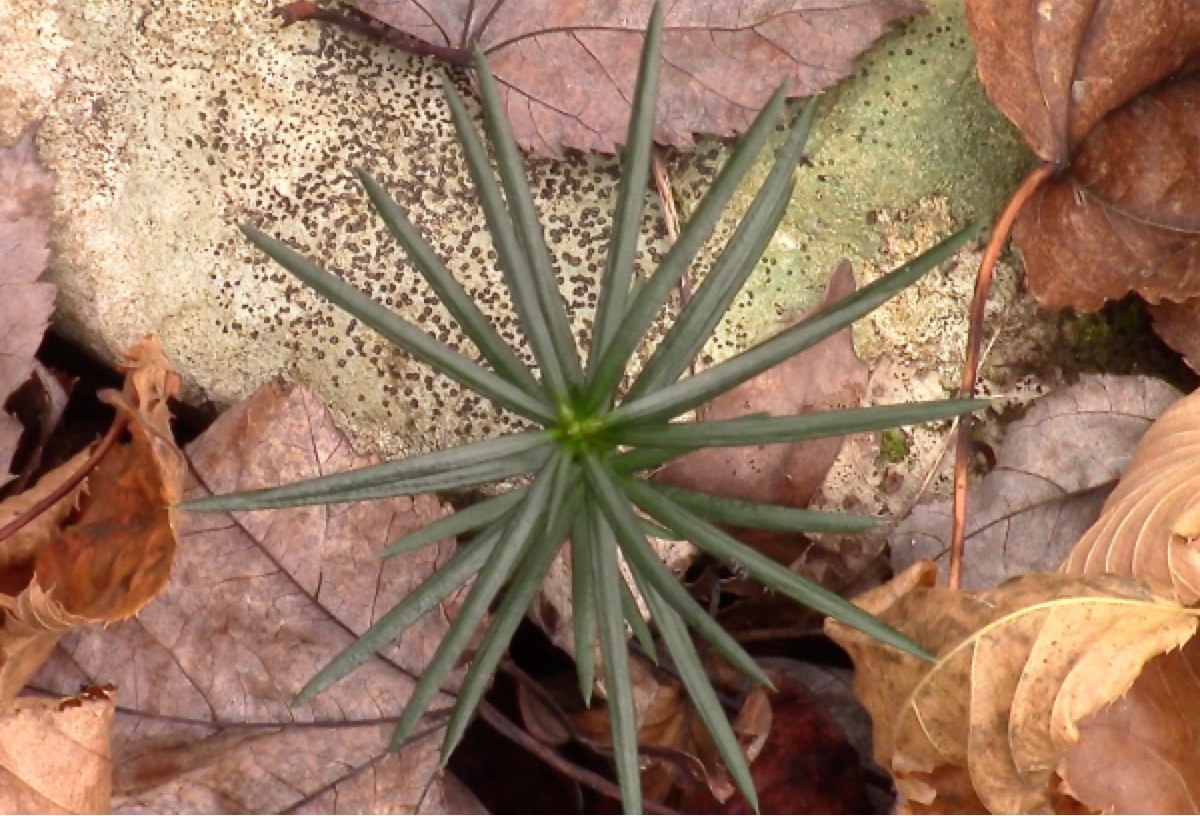
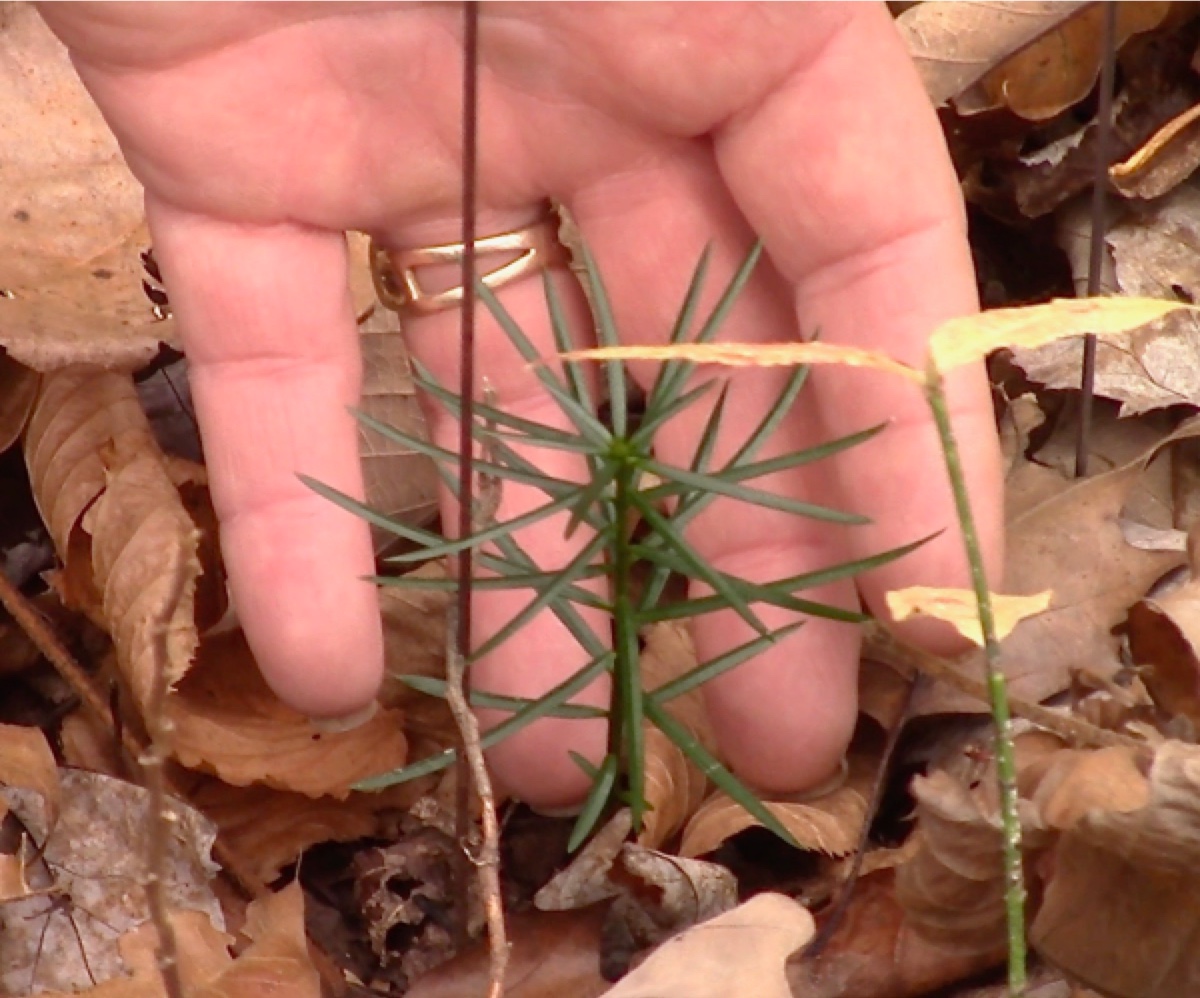
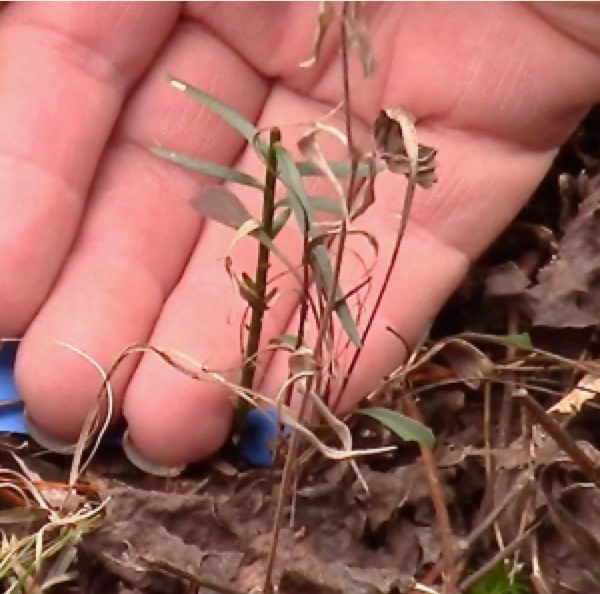
During my [Connie Barlow] site visit as photographer, I got a close look at 34 of the double-flag sites. The PHOTO LEFT is the only seedling that had already suffered herbivore damage. Will it survive? 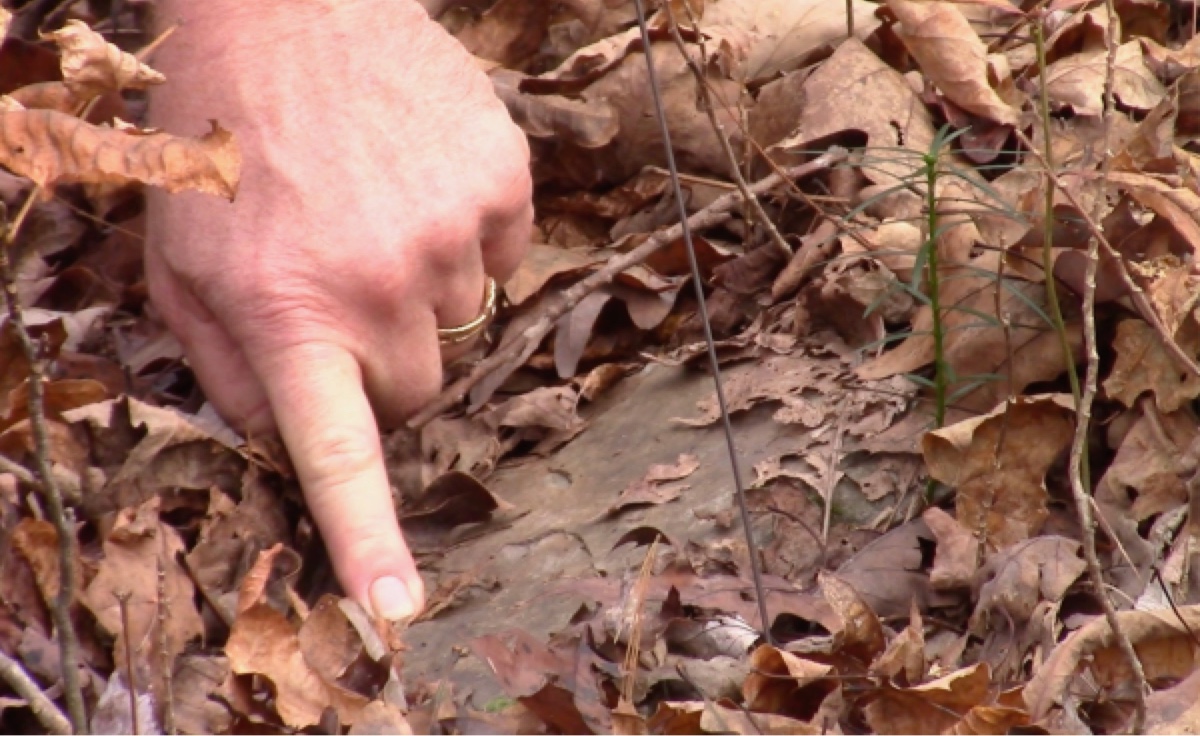
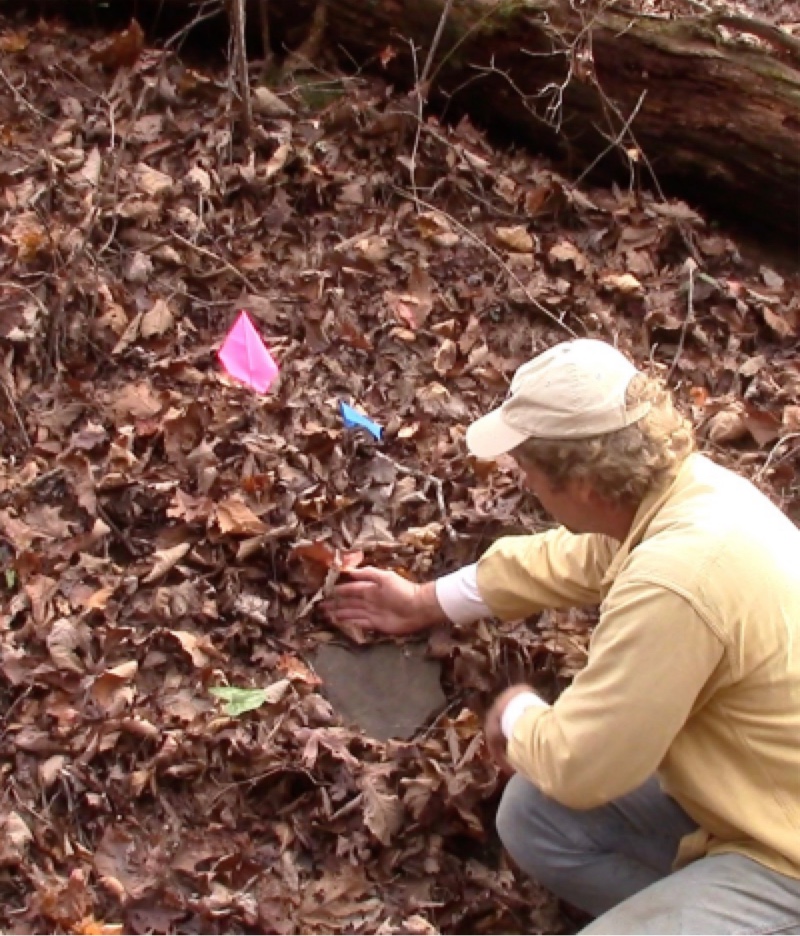
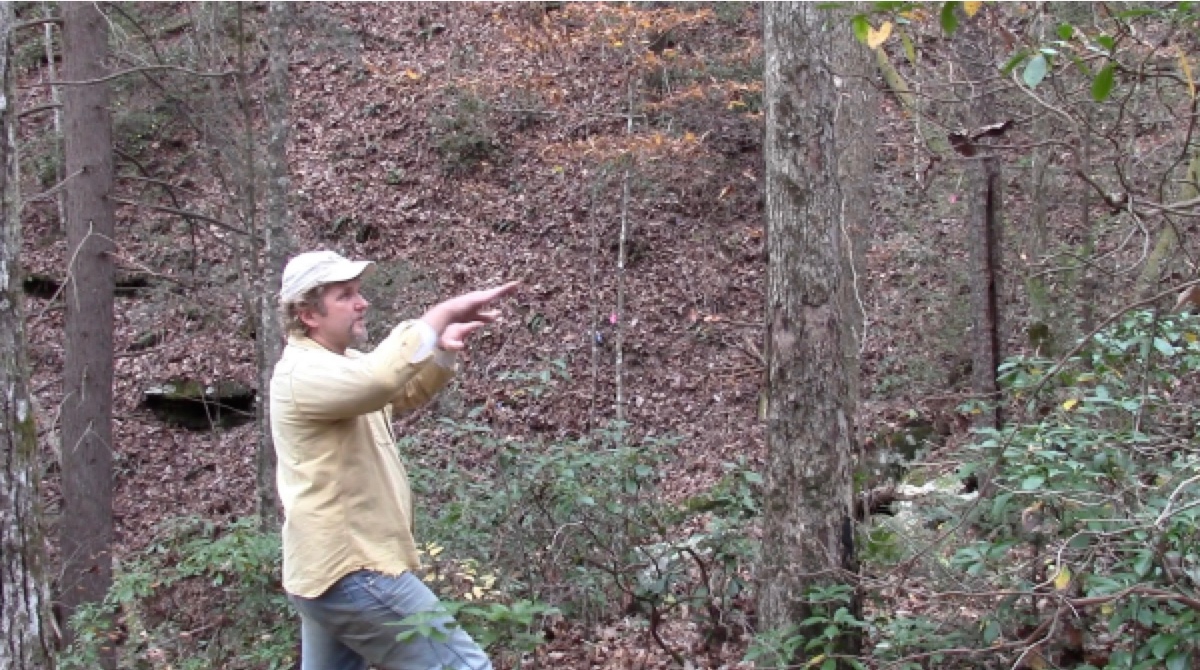
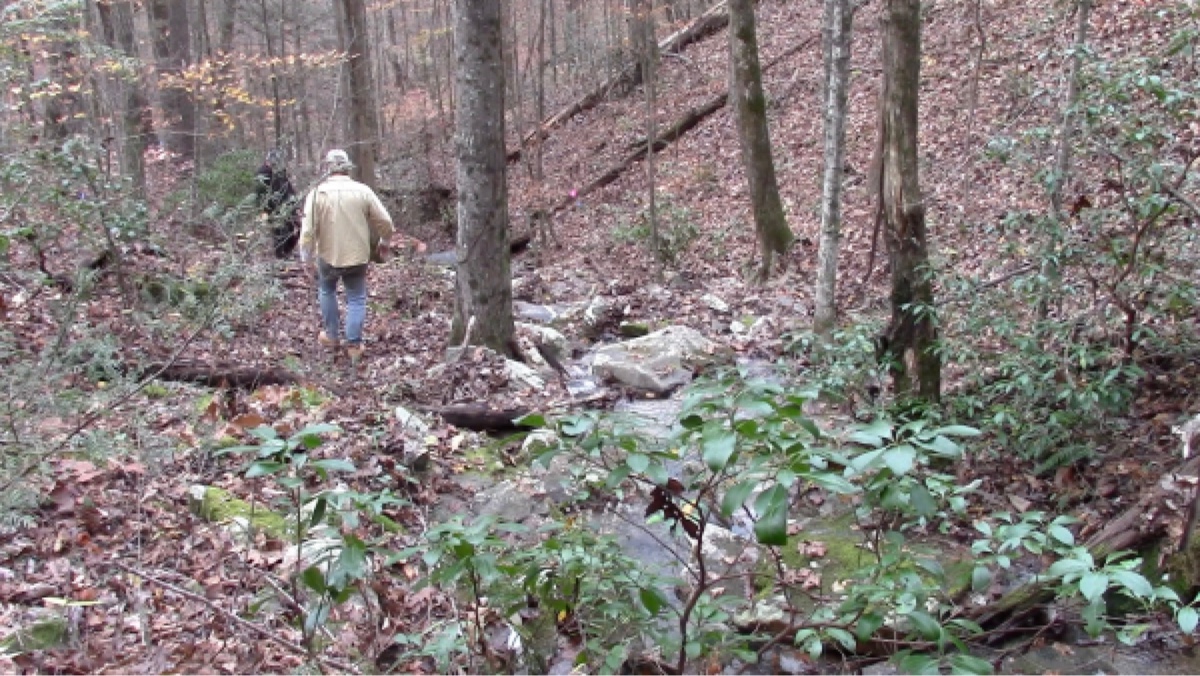

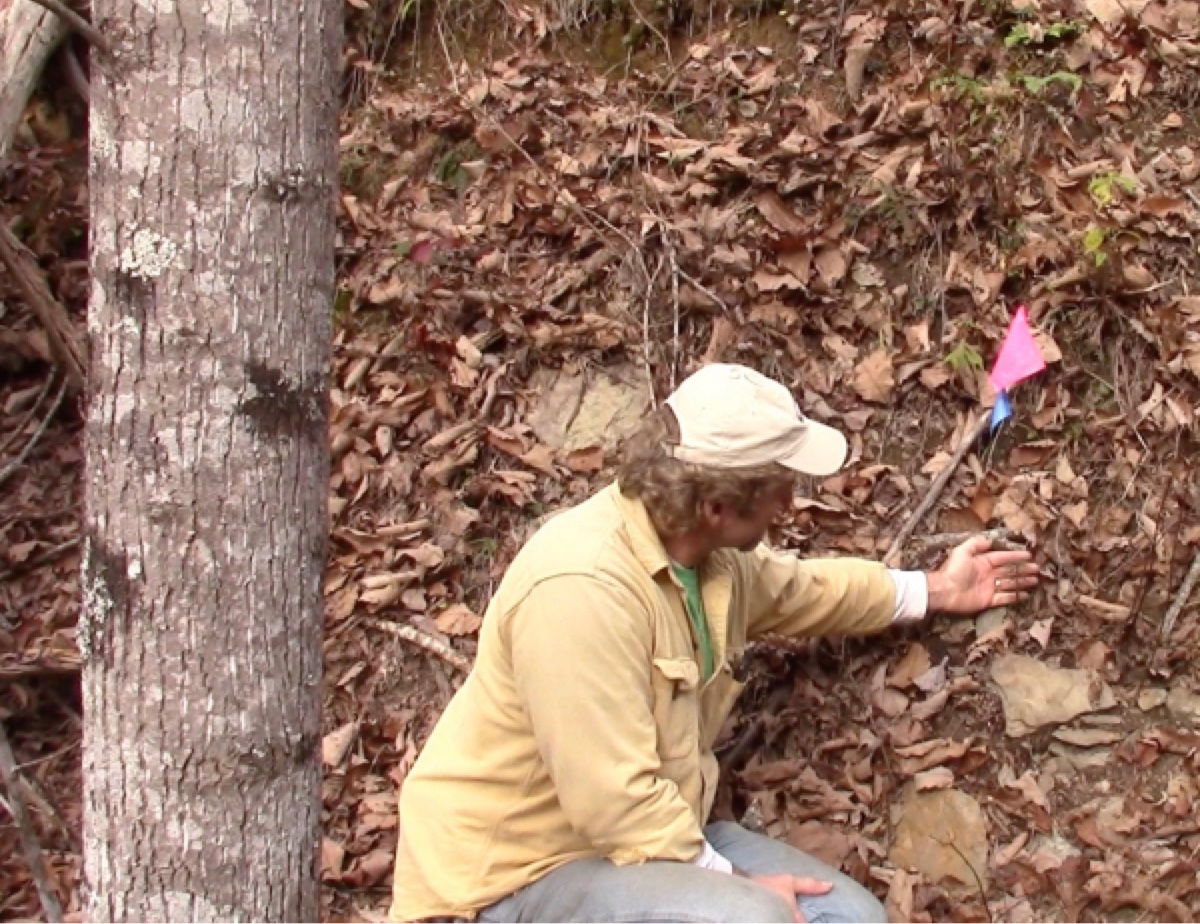
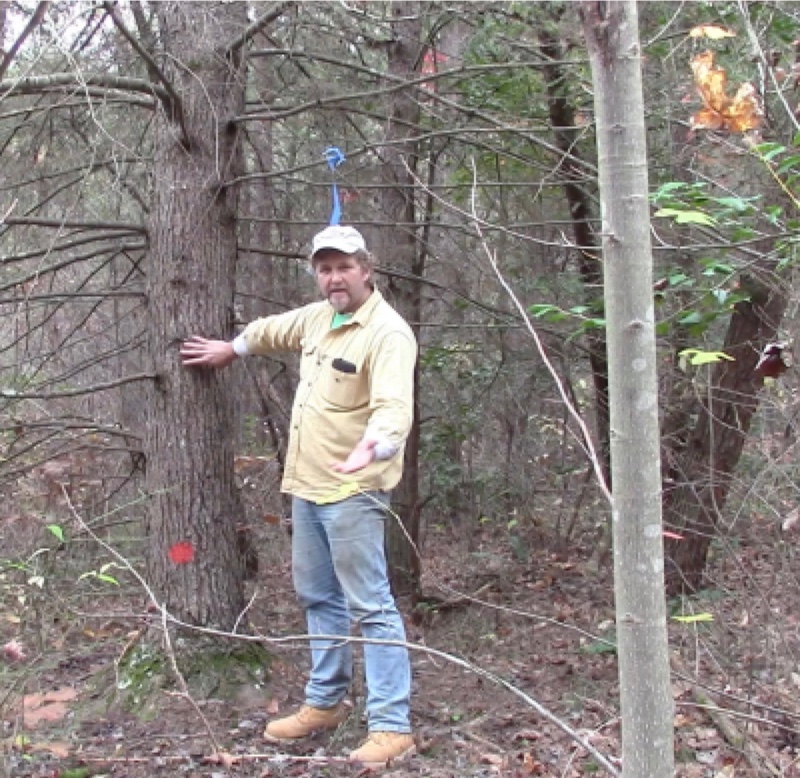
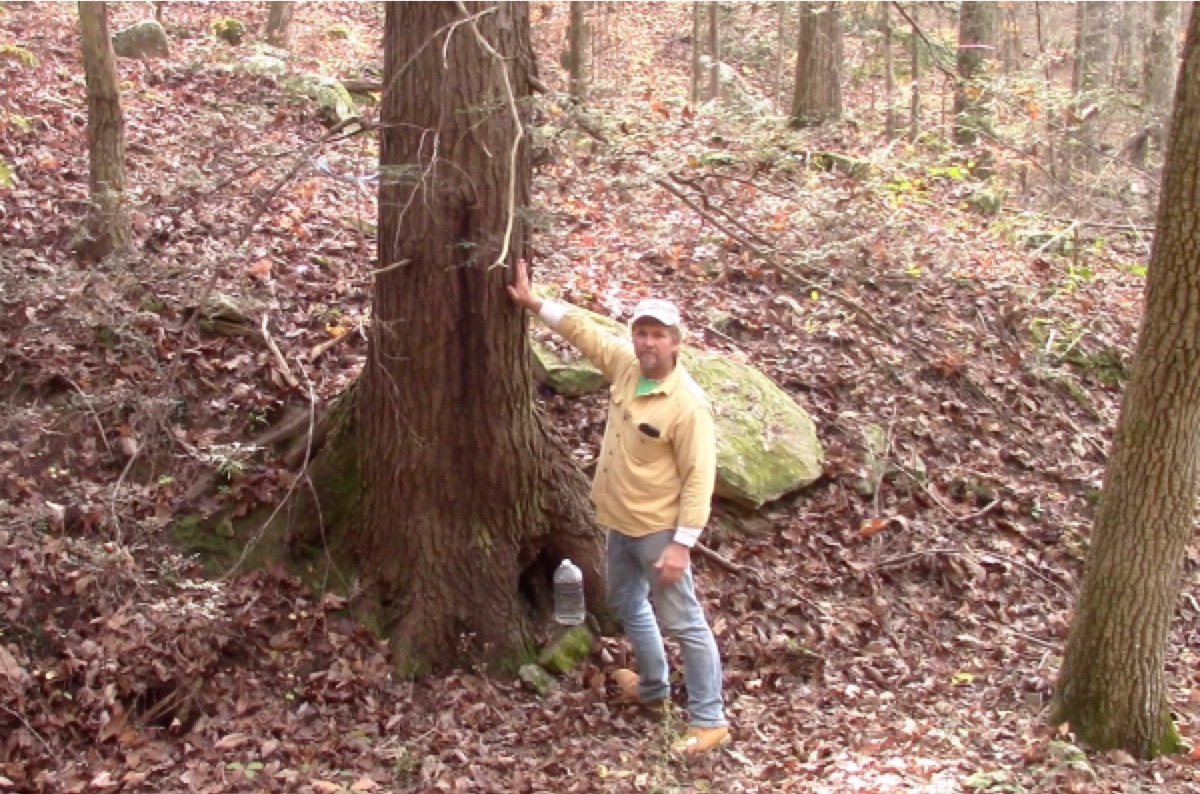
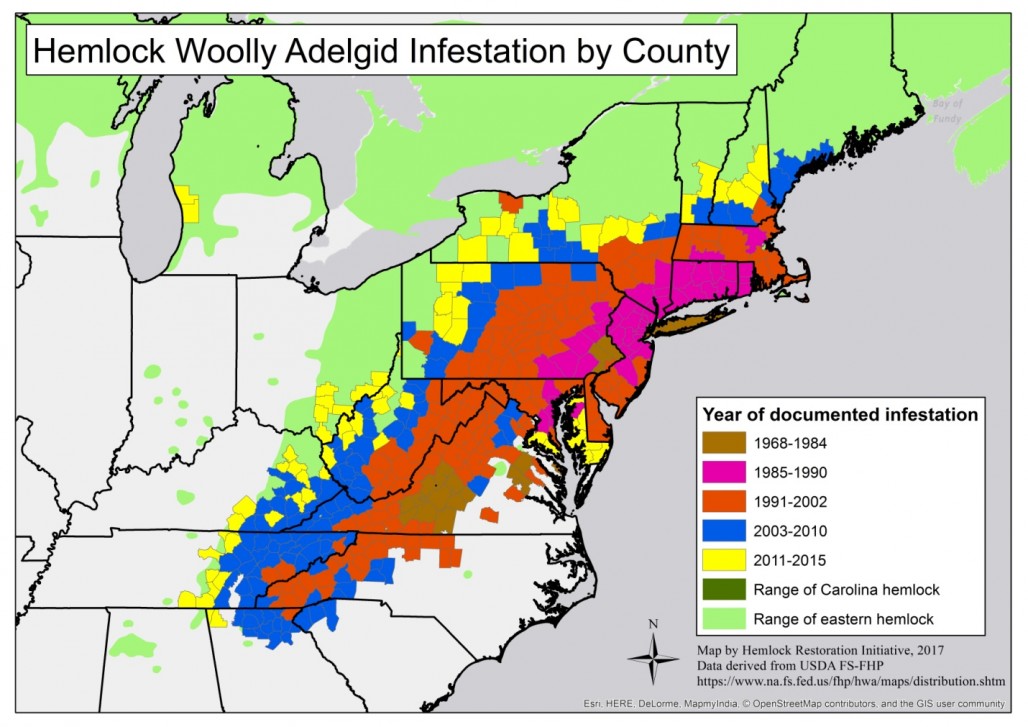
The Anderson property is toward the westernmost limit of Eastern Hemlock populations contiguous with the southern Appalachians. An alien insect, the wooly adelgid, decimated hemlocks in the North Carolina mountainous areas almost two decades ago. The sap-sucking pests reached this property just a few years ago, and by then scientists had figured out how to effectively treat hemlock trees one by one.
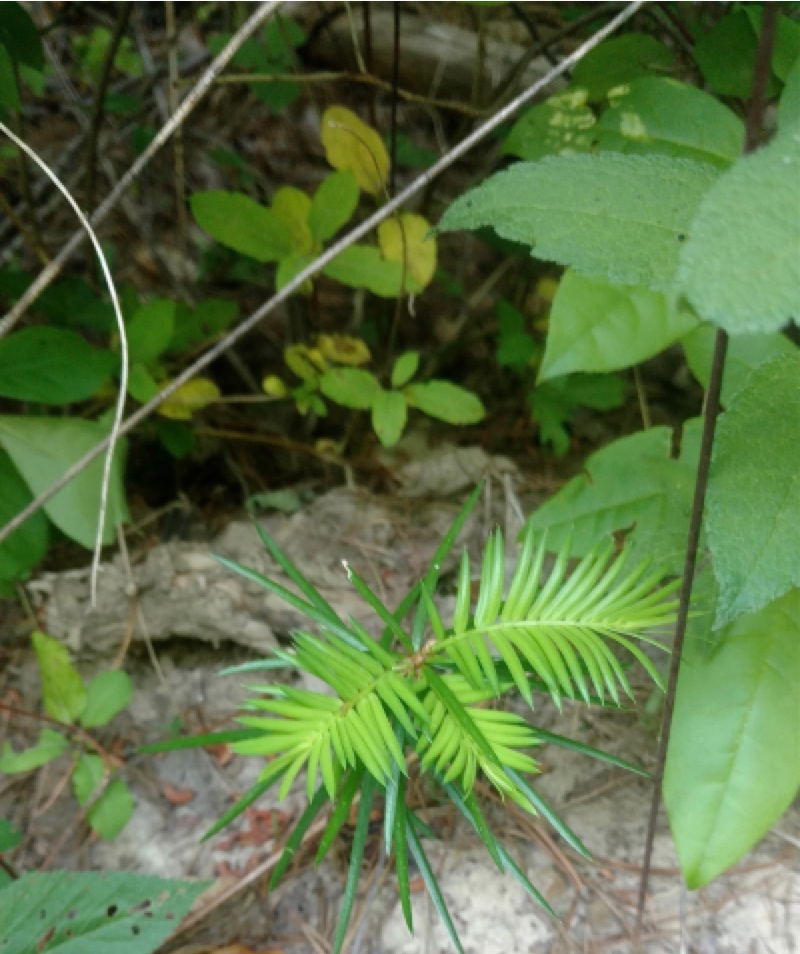
This photo was taken 15 May 2018 and shows the spring flush of new growth on a seedling that sprouted (from seed planted directly into the ground) last fall. 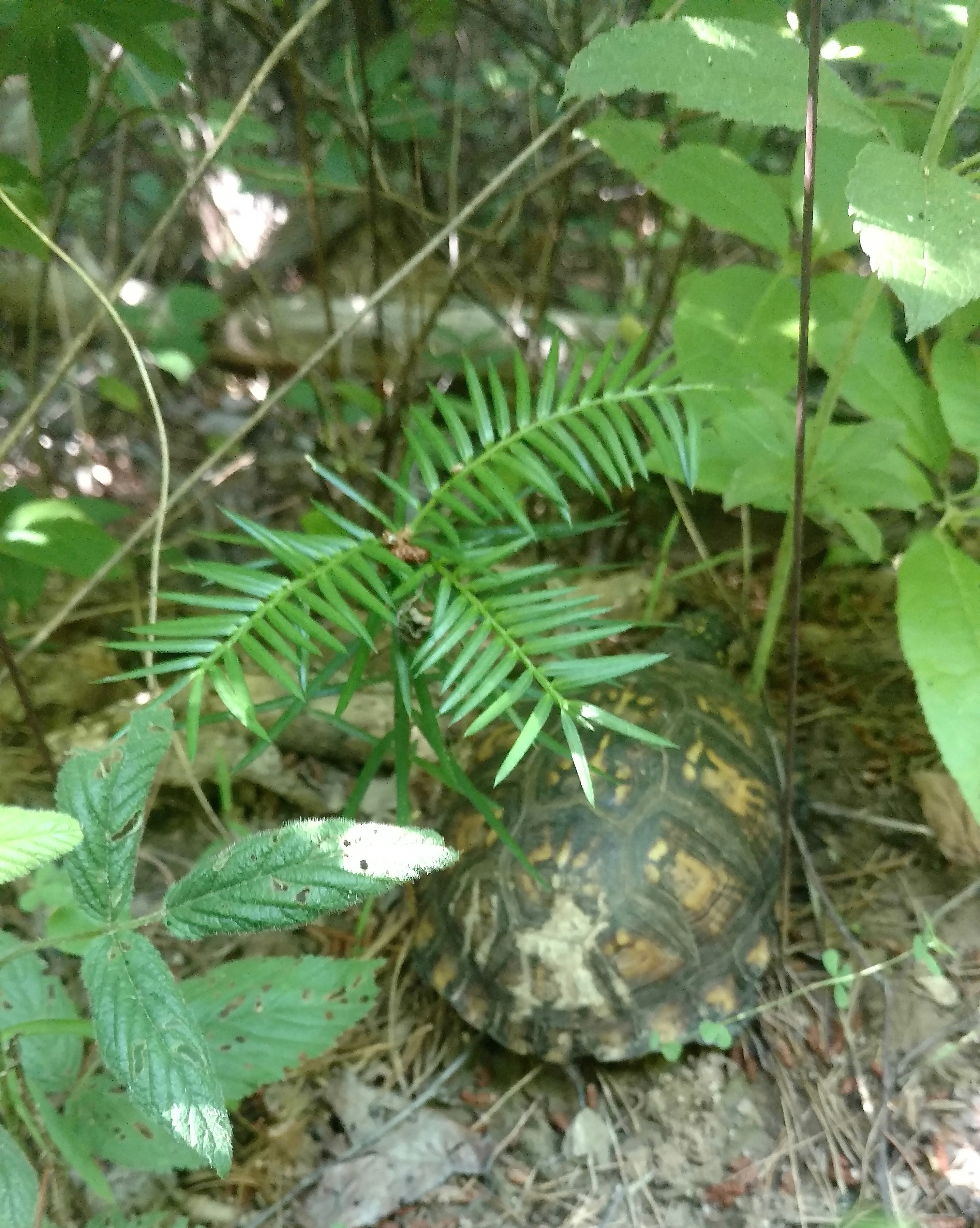
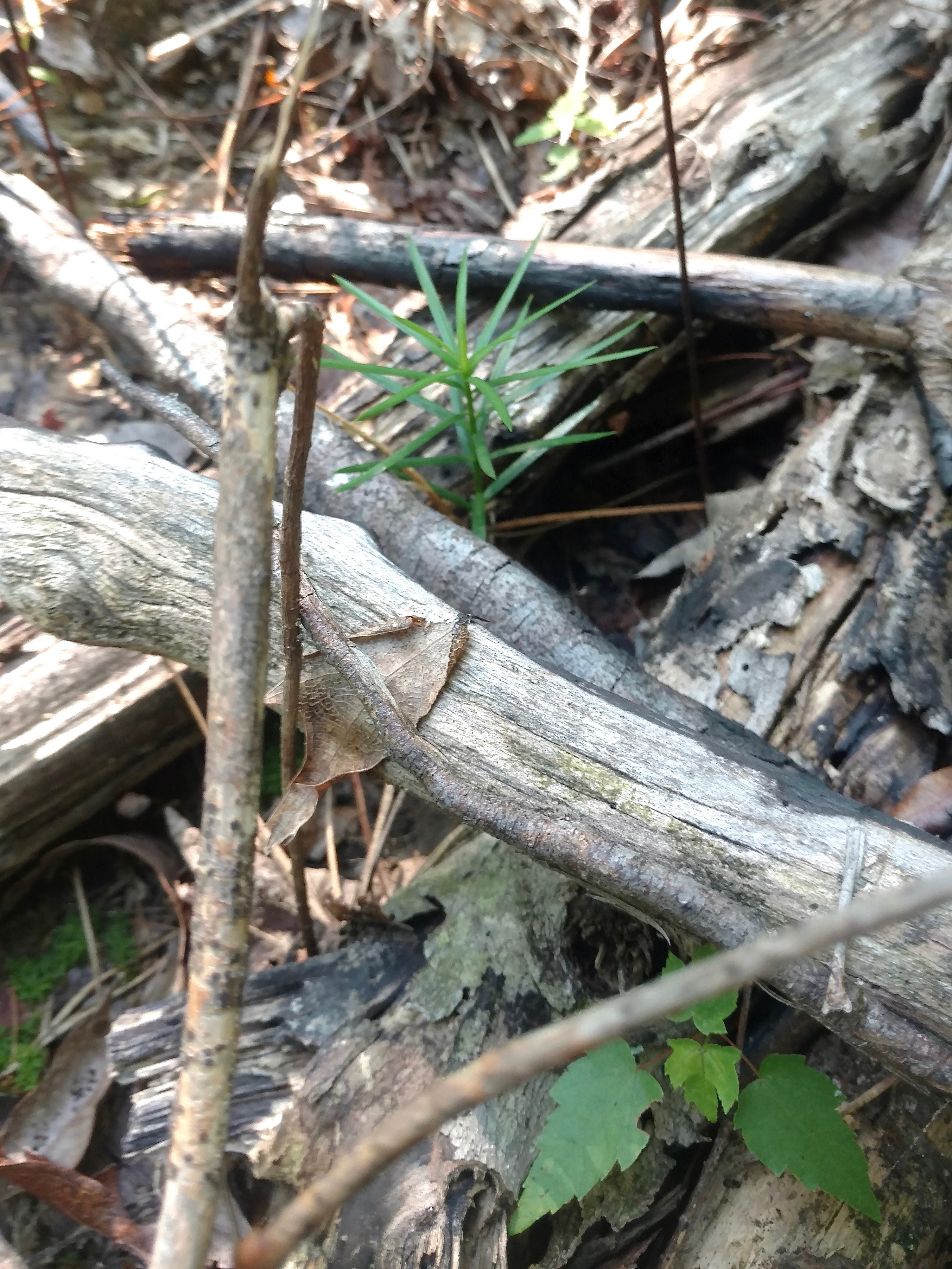
Above right: June 17 photo of Torreya resprout after February 2018 burn. This particular one is on the fringe of routine burning. I can protect them in the future from fire, but this one was overlooked — but did respond to resprout on its own.
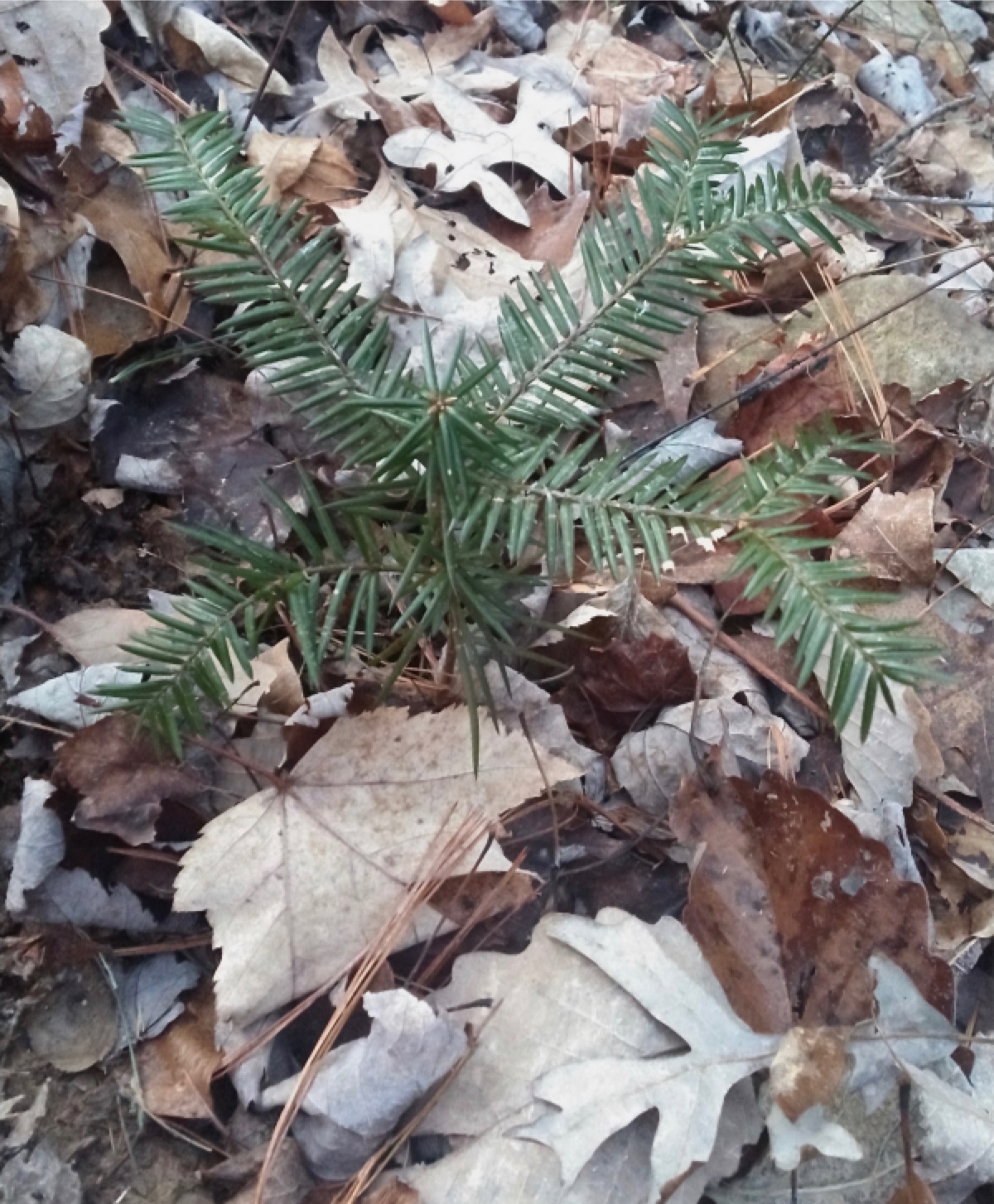
"Herbivores have not been an issue from day one of sprouting. The only harm to the torreyas have come from mechanical tree farm projects. After fires they resprouted strong. I will be starting an assessment of them over next few weeks during our fall gun deer season."